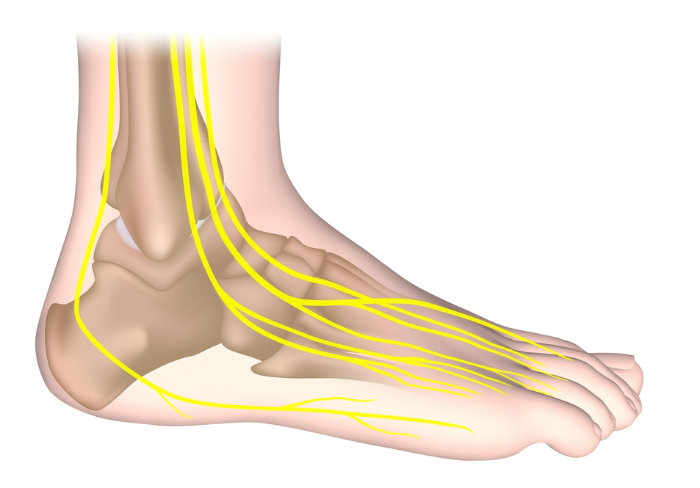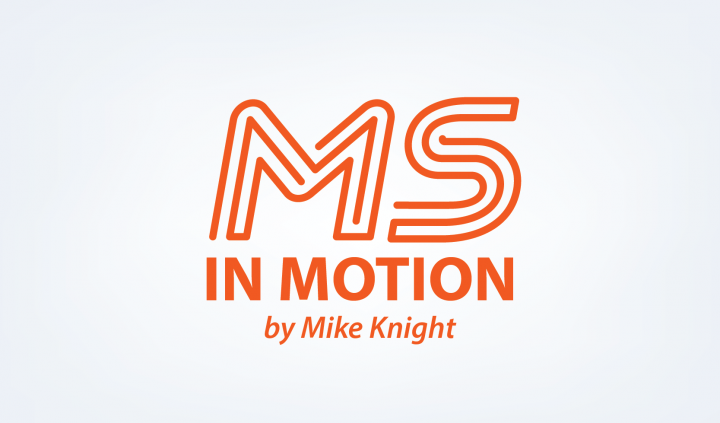Out on a Stim: My FES Journey Comes to an End (Part 3)
Written by |


Third in a series. Read parts one and two.
In March 2018, I began a personal research project — quest if you will — to assess how functional electrical stimulation (FES) devices might help me deal with the foot drop in my right foot.
Since then, I’ve spent roughly three months wearing products from two FES manufacturers in the United States: Bioness (specifically, the L300 Go) and the WalkAide System.
For transparency’s sake, I received no compensation or consideration from either company for writing about their products. I spent $595 of my own money to try the L300 for a month (before deciding to return it). My trial with the WalkAide System lasted about two months. It was originally supposed to be two weeks, with a $250 price tag, but my time was extended and fees waived due to my hesitations about buying the device.
I’ve written two columns about the process and experience (here and here).
And after all that? FES and I just aren’t made for each other. But it’s not FES. It’s me.
Connect with other patients and share tips on how to manage MS in our forums!
I think the two products are more alike than not, save for a few differences. I prefer the design and appearance of the Bioness L300 as well as the unit’s comfort and wearability. (The soft, padded electrodes are easier to work with than the sticky, rubber variety used by WalkAide, especially when repositioning is required, and the Bioness didn’t need to be quite so tightly worn, either.) On the other hand, it seemed like WalkAide’s pulse, and the way it adjusted and “positioned” my foot as I stepped through my gait, felt more natural.
The reps from both companies were both terrific to deal with, the literature and websites fine, etc.
Both devices require fairly precise positioning for the electrodes to make contact with the peroneal nerve, which runs along the outside of legs and provides movement and sensation to the lower legs, feet, and toes.
But I spent more than a little time trying — often unsuccessfully — to get that positioning right. When I couldn’t, I’d amp up the stimulation’s intensity in an effort to reanimate my nearly dormant foot. Sometimes that helped, but many times it transformed a “gentle,” friendly electrical pulse into an intense, mean-spirited one that contorted my foot and step so badly that I resorted to using coarse language. It also made me want to throw something. If only I could tolerate walking over to pick something up to throw it.
I asked both reps what could realistically be expected from the devices. Each had clients who had successfully used their products for several years, but both said that it was difficult to predict what to expect due to the myriad challenges and unpredictable nature of multiple sclerosis.
I’ve come to think of it as the “MS treatment mantra.” It’s a complex disease, no one knows for sure what causes it, no one knows what cures it, and no one really knows why the disease — and sometimes, the treatment — seems to affect each of us who have it so differently. I get it. I’ve tried Ampyra (dalfampridine), biotin, Ocrevus (ocrelizumab), and Tecfidera (dimethyl fumarate), and I don’t believe I’ve benefited from any of them.
But tempering hope with an open-ended level of expectation that suggests it may be best to have no expectation at all for anything other than MS (and its progression) and how I respond to it, can be challenging. Like lots of other people, I’ve spent a lifetime — naïvely perhaps — trying to establish expectations around all kinds of things. Jobs. Friends. Relationships. You name it.
My FES experience left me flat-footed, literally and emotionally, and more than a little confused. Finally, it dawned on me that perhaps I should make an effort to understand expectations better before I tried having any more. I’m simple that way.
Which led me to an excellent article in Psychology Today that noted in part how “human beings have a natural tendency to pin their hopes for happiness on fulfilled expectations” before explaining how that leads to disappointment. It is not specifically about MS, and it definitely wasn’t where I expected FES devices or this series of columns to end up. But now that I’m here, I’m certain it was the journey I needed to take, and I’m glad I was able to make it.
***
Note: Multiple Sclerosis News Today is strictly a news and information website about the disease. It does not provide medical advice, diagnosis, or treatment. This content is not intended to be a substitute for professional medical advice, diagnosis, or treatment. Always seek the advice of your physician or other qualified health provider with any questions you may have regarding a medical condition. Never disregard professional medical advice or delay in seeking it because of something you have read on this website. The opinions expressed in this column are not those of Multiple Sclerosis News Today or its parent company, Bionews Services, and are intended to spark discussion about issues pertaining to multiple sclerosis.






Tonia Smith
Hi Mike my name is Tonia and I have the Bioness L300 I have had it for about a month and half and I love it! I have not fallen at all there has been times when I would have fallen if would I have had my AFO on but with the L300 on I did not fall. I know that it is not for ever one but it has been working great for me. I wish you all the best and may God Bless you.
GARY SHAMBLEN
I too tried both, selecting one in the end. That was about four years ago. During that time I have learned a great deal about fine tuning of my chosen product to suit me. After wearing an AFO for several years, this product is a blessing. It has built back a great deal of muscle and nerve function in my lower leg. I can go without wearing it now and using my stick but much better with the device. It does have some inconveniences but nothing like dragging my toe and falling or making one shoe larger than the other to fit over the AFO.
George Trebaol
I've been using a WalkAide for over two years. It took the orthotist multiple visits to get the settings adjusted but I haven't had to have them adjusted once they were correctly set. I can't walk safely without the device. My physical therapist and neurologist even convinced my HMO to pay for the device (80% of it). I was the first MS patient to get this approval. Since then, others have also been covered. I tend to think you need a more talented orthotist.
Jeanine
Hi George,
I tried both Bioness and WalkAide and my insurance denied me. Even told me I would have been covered if I had had a stroke but no coverage for MS because its "progressive". Please tell me what verbiage your Neurologist user so that I may sharebit with my Neurologist and perhaps have similar success
Wendy
I have had the Bioness L300 for several years. I just changed to the new Bioness L300 Go and love it. I can use it barefoot and am thrilled with it. It does take a while to get used to it and I agree the cloth electrodes are wonderful. I used the gel ones with the first Bioness and they could get sticky and gummy. I agree with Gary about the AFO. I have had 2 in the last 2 years and get tired of buying 2 pairs of shoes and giving 1 larger shoe away. I realize the new Bioness L 300 Go is very expensive but it is a great help with drop foot.
CHRISTINE DePALMA-CUNNINGHAM
I’ve worn my WalkAide for about 5 years now...I must admit I loved it more years ago...not because of the WalkAide...it’s still performing as expected...as us MSers know....my body is changing due to my SPMS diagnosis and it seems like I might have stemmed my /perineal nerve too much...so much so it doesn’t seem to want to work anymore...my physiatrist is trying to help and just did some Botox injections into my right calf and see if that helps
I pray that it will start working again with the addition of Botox!
Brian M
I was diagnosed with SPMS two years ago. My disease primarily affects only my right lower leg and foot. I can walk without any aids and am still very active (averaging 10,000 steps per day according to my watch). My orthotist convinced me that I could benefit from an FES device to keep the tone in my leg up and I purchased the WalkAide. Note: I too was turned down by my insurance because there was "no evidence" that use of an FES could fix MS; that is not the goal of the FES device but they are in the business to make money, not really help people. I use the WalkAide sporadically, mainly when my leg feels weaker or I want to work out the muscles more. I want to make a point to those out there who are very ambulatory. I had not fallen in a long time while walking but if I am going to hike on a trail, I use two walking sticks every time. But, when going downhill, turn off your FES if on steep or loose footing. You want to plant the entire foot on the trail as you descend but the FES wants to make sure that your toe goes up such that you are on your heel. While going down a steep trail last year I fell five (5!!!!) times coming down. This was even though I was using two hiking poles. I figured it out and now I use the FES going uphill and turn it off when going down. Just my experience and your mileage will vary.
Thomas
I have been using the WalkAide for over 10 years, originally I was using an AFO, the WalkAide replaced the AFO and it was a tremendous feeling to no longer need to stuff my shoe with the plastic device. Unfortunately, MS being the progressive disease that it is, has me now using both the AFO and WalkAide in combination along with my cane. I would absolutely recommend the WalkAide for anyone that it would work for. As stated in the article, because of the differences in how our MS affects each of us, the WalkAide isn’t for everyone.
My insurance did pay for my WalkAide.
swetha polamreddy
Hi
I am trying to get one of this for my 8 year old daughter. She is a brain tumor survivor and has a foot drop. Any suggestions regarding which one is better for pediatrics and why. Also any advice on how to get this covered by insurance is of great help. Thank you everyone
Laurel Druce
I have had a WalkAide for about 5 years. At first it was a miracle. I couldn't believe how far I could walk with it. I chose it over the Bioness because I didn't want to have something in my shoe. I have SPMS. However, the last 2 years I have hated it. It turns my foot out to the right, or makes my foot stick to the ground. Hanger Clinic has given up on me. When I see them for an adjustment, it works fine. But then, the next day, I am back to it being worse with it on. I'm at my wit's end.
miko
My private PPO, Health Net, called this Investigational and denied coverage. Ideas how I should pursue?